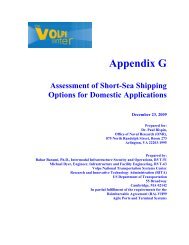ERRV Viking Islay - Marine Accident Investigation Branch
ERRV Viking Islay - Marine Accident Investigation Branch
ERRV Viking Islay - Marine Accident Investigation Branch
- No tags were found...
You also want an ePaper? Increase the reach of your titles
YUMPU automatically turns print PDFs into web optimized ePapers that Google loves.
1.21.2.1NarrativeEvents preceding the accidentOn Friday 21 September 2007 the Emergency Response and Rescue Vessel (<strong>ERRV</strong>)<strong>Viking</strong> <strong>Islay</strong> arrived at Immingham pilot station, following a duty period of about 28 daysoffshore. The ship had not anchored during the trip as anchoring was forbidden at theoffshore location.As was normal in preparation for arrival, <strong>Viking</strong> <strong>Islay</strong>’s starboard anchor had beenwalked out a short distance; it was not dropped clear of the hawse pipe, but just movedenough to confirm that it was free and clear to be run out in case of any emergency.Possible impediments to the anchor chain running free included the expanded foam,that was routinely used to seal the top of the spurling pipe 1 on the foredeck, and lightrope lashings used to secure the anchor chain within the chain locker (Figure 1).Figure 1For’d store access hatchExpanded foam used to seal spurlingpipes - no other chain locker ventsPortStarboardThe foam was used to prevent water entering the chain locker via the spurling pipe.Light lashings were sometimes applied inside the chain locker by the crew, in order toprevent the hanging part of the anchor chain from moving in rough weather (Figure2). Such movement could cause the chain to bang noisily against the spurling pipe, orother steelwork.1 Spurling pipe: The tube running from below the anchor windlass on the foredeck, through the foc’sle storedown to the chain locker, so enclosing the anchor chain3
















